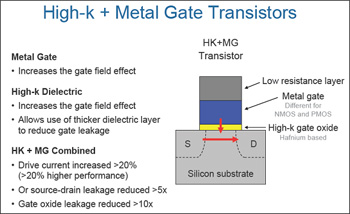Intel's Future Plans
Right after our talk with John Freude of AMD, we also had the opportunity to talk to Tim Bailey, Intel's APAC Director of Marketing about Intel's future plans. He touched on everything from the Penryn which is just-over-the-horizon to Intel's next-generation 32 nm process technology. Let's start with Penryn.
Penryn
Intel is on track to deliver the Penryn family of 45 nm processors by the end of 2007. The exact date has yet to be decided but it will definitely be launched before 2007 is over. This coincides with the release schedule of the AMD Phenom family of desktop processors, although Tim maintained that Intel is on their own release schedule and the Q4, 2007 release schedule has nothing to do with AMD's plans at all.
It is expected that Intel will launch the desktop Wolfdale processor first. This processor will feature a 6 MB L2 cache, a 1333 MHz FSB and support for SSE4 instructions. This will be followed pretty quickly by the launch of the Yorkfield quad-core processor and the Penryn mobile processor. The Yorkfield, as mentioned earlier, will be made from two Wolfdale dies, each with a separate 6 MB L2 cache.
Although Tim cannot comment on the actual yield or the number of 45 nm fabs in action, yield is said to be good and production samples are already being tested. With only four months left in 2007, ODMs should be receiving their 45 nm engineering samples pretty soon. Once launched, Intel will rapidly ramp up production of these 45 nm processors, marking a rapid switch from the current 65 nm process technology.
This is quite bad timing for AMD. They are just about to launch their new quad-core Opteron and Phenom processors, both fabricated on the 65 nm process technology. Moving to 45 nm will give Intel a definite marketing advantage, even if you discount the obvious benefits of moving to the smaller process technology. Even Tim has started quipping, "65 nanometers is old technology".
High-K + Metal Gate Transistors
 Although AMD has continuously espoused the advantages of fabricating their processors using the SSOI (Strained Silicon On Insulator) technology, Intel is still not buying it. Instead, they are banking on high-k gate dielectrics and metal gates to improve the performance of their transistors.
Although AMD has continuously espoused the advantages of fabricating their processors using the SSOI (Strained Silicon On Insulator) technology, Intel is still not buying it. Instead, they are banking on high-k gate dielectrics and metal gates to improve the performance of their transistors.
All the technical details on hafnium-based high-k dielectric and metal gates may impress tech geeks, but what does it mean for the rest of us? Tim says that the high-k dielectric and metal gate transistors used in the upcoming 45 nm processors will improve transistor performance by 20% and reduce the transistor switching power by 30%. In other words, they allow Intel to deliver faster clock speeds, lower power consumption and lower temperatures.
The Future
While we are waiting with bated breath for Intel's 45 nm processors, their engineers are already hard at work on the 32 nm process technology. As mentioned in our previous editorial, Intel switches between architectural changes and new process technologies every year or so, using a tick-tock cadence.
If Intel follows this cadence, the switch to the 32 nm process technology should take place two years later, in 2009. So far, Tim says Intel is on track and should deliver 32 nm processors by 2009. This should be the die-shrinked version of Nehalem, called Westmere (also known as Nehalem-C).
Tim also let us know that Intel will be launching an update of the vPro business platform, tentatively called vPro 2. In addition, they intend to introduce a consumer version of the vPro's remote system manageability features, codenamed Castle Peak, sometime in the future.
Beyond that, Intel engineers have targeted two milestones in processor technology. They intend to deliver teraflop-on-a-chip as well as a sub-1W processor by the year 2010. According to Intel's development schedule, that duty would rest on the team developing the Sandy Bridge microarchitecture.
Questions & Comments
Please feel free to post your questions or comments here!
| Date | Revision | Revision History |
02-09-2007 |
1.0 |
Initial Release. |








 Add to Reddit
Add to Reddit
